9.7 cm
26.8 cm
19.6 cm
9.2 cm
16.7 cm
9.8 cm
1.6 cm
16 cm
8.8 cm
The Aurora Hall-effect Propulsion System
The Orbion Aurora is a fully integrated Hall-effect propulsion system, comprised of a magnetically shielded thruster for ultra-long life and high total impulse, power processing unit, propellant management assembly, harness assembly, and storage tank.
* Not shown: Propellant Plumbing and Propellant TanksPower Processing Unit
26.8 cm x 19.6 cm x 9.7 cm
- 90% efficient
- 24 – 35 V S/C Bus input
- RS-422 Interface
- Other interfaces available upon request
- Total Ionizing Dose (TID) Options
- Pathfinder (5 krad TID)
- Constellation (25 krad TID)
- Cislunar (>100 krad TID)
- 5.8 kg
Hall-effect Thruster
9.2 cm x 9.8 cm x 16.7 cm
- Continuously throttleable from 100 – 300 W
- Xenon or Krypton
- Magnetically shielded
- Patent-pending ZeroTorque design has zero magnetic moment, so no perturbing magnetic torque on your spacecraft in LEO
- 1.5 kg
Propellant Management Assembly
16 cm x 8.8 cm x 1.6 cm
- Available exclusively from Orbion
- Interfaces directly with storage tank
- 1 anode, 1 cathode flow output line
- Proportional flow control – fully throttleable
- No direct interface necessary with spacecraft CDH
- Driven by PPU circuitry and software
- 50 mW
- 700 g
Aurora system physical specifications
The spacecraft interface is simple: A 28-volt unregulated power connection and an RS-422 data connection. We can either provide propulsion system components separately so you can locate them as desired within your spacecraft volume, or we can integrate the complete system on an element of spacecraft structure you provide.
| Parameters | Value | Unit |
|---|---|---|
| Mass* | 8 | kg |
| Dimensions (HET Envelope) | 9.2 x 9.8 x 16.7 | cm |
| Dimensions (PPU) | 26.8 x 19.6 x 9.7 | cm |
| Dimensions (PMA) | 16.0 x 8.8 x 1.6 | cm |
| PPU Input Voltage | 24-35 | V |
| PPU Data Interface** | RS-422 | |
* Not including propellant and tank ** Other options available |
| Product | Attributes | Typical Application | Collision Avoidance |
|---|---|---|---|
| Aurora | AEC-grade passive with space-rated PEM active components where appropriate | Missions where cost is driving requirement | Available with El Matador |
| Aurora HD | AEC-grade passive with QML/QPL ceramic active components | Missions where reliability is driving requirement | Available with El Matador |
| Aurora HDX | QML/QPL passive with QML/QPL ceramic active components having > 100 krad TID | Missions in MEO, GEO, or xGEO where reliability and TID are driving requirements | Available with El Matador |
Product Variants
Orbion offers a full spectrum of Aurora system variants to meet your mission requirements and your budget. All variants feature the same Hall-effect thruster and propellant management assembly, have identical propulsive performance (e.g. specific impulse, thrust, and lifetime), and identical size, weight, and power. The differences are manifested in certain electronic components within the PPU. The Aurora base model is the most economical, while the HDX version features electronic components with best-in-industry radiation hardness and the space industry’s highest recognized assurance class. All variants are available with or without our patented El Matador collision avoidance feature.
Design Philosophy
Decades of laboratory testing and in-space heritage have proven that Hall-effect thrusters (HETs) possess an unrivaled combination of high thrust, specific impulse, and reliability. The Orbion Aurora is the next step in Hall-effect technology. Aurora was designed from the ground-up to be an affordable, reliable, mass-producible product. We didn’t just design a new thruster—instead, we designed an entirely new process.
The Orbion Aurora is not a laboratory technology—it’s a workhorse product you can trust for your in-space maneuvers. You can count on our Aurora system to:
Maximize performance.
Class-leading thrust-to-power of over 60 mN/kW combined with 1,400 seconds of specific impulse reduces maneuver time, as well as propulsion system wet mass allowing you to carry more payload.
Simplify your interface.
With the Aurora, we build on proven technology while pushing the state of the industry within practical measures. You can be assured that Aurora will not interfere with the important functions of your spacecraft. No RF noise. No spacecraft contamination. Just thrust when you need it – every time. Aurora’s flexible software interface makes it easy to control from your CDH. You can set thrust and burn duration and just fire-and-forget, or you can control detailed aspects of performance and retrieve operational parameters logged internally to the Aurora system.
Custom Integrated Modules
Orbion can design a custom packaging solution to integrate Aurora with your spacecraft. We can even perform the integration labor and inspections: send us a spacecraft panel and we return it to you with a fully integrated and fueled propulsion system ready to bolt on to your spacecraft.
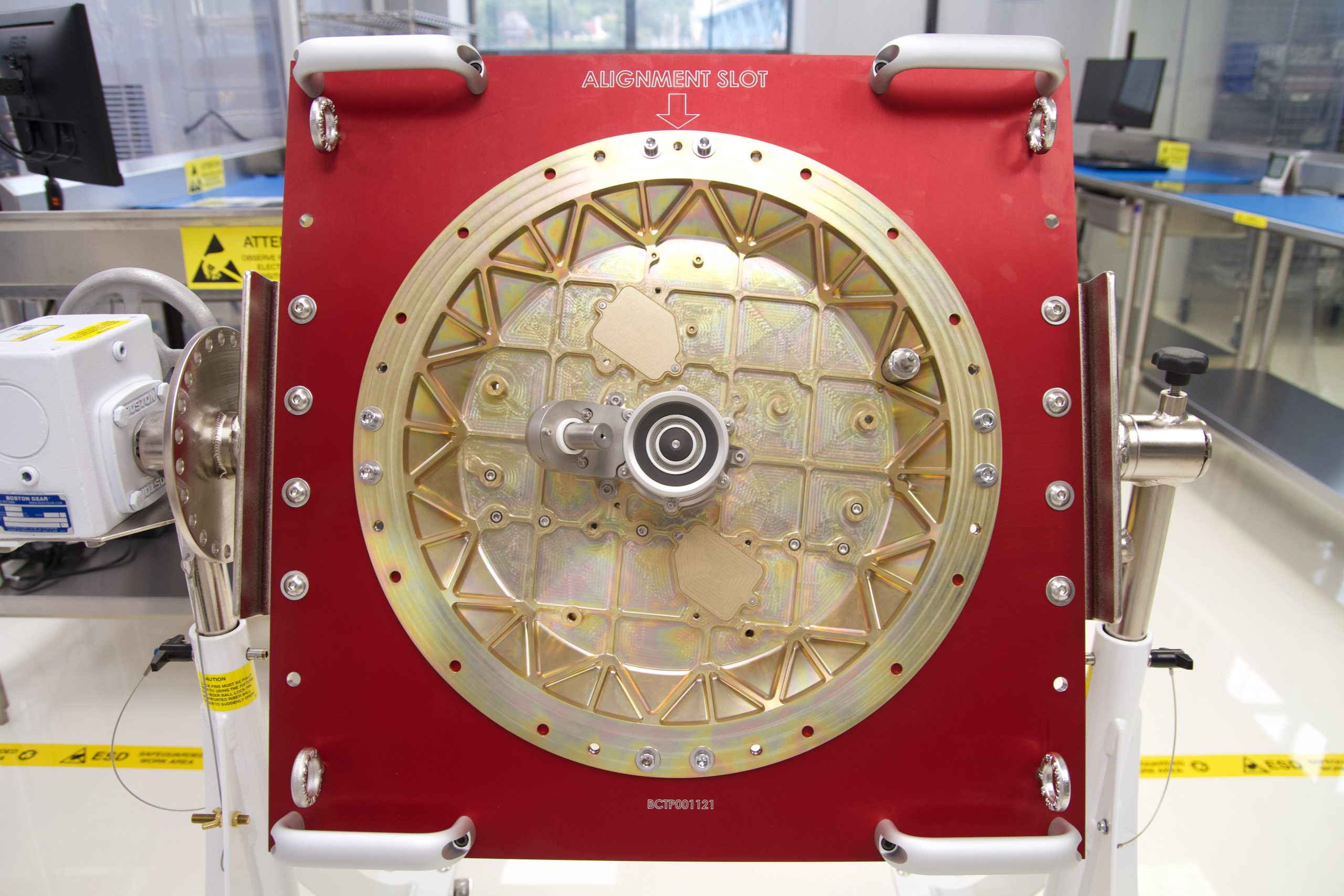
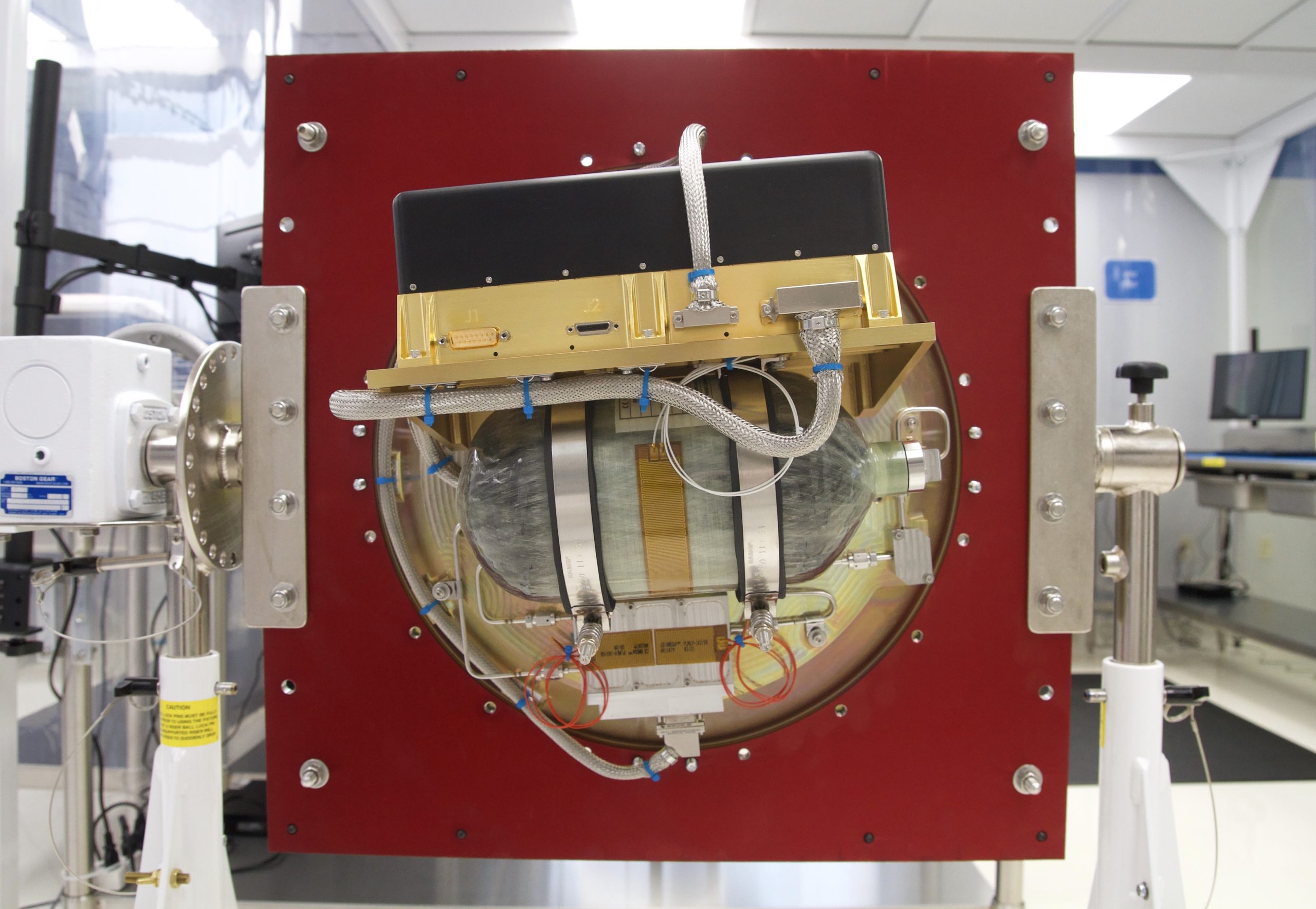
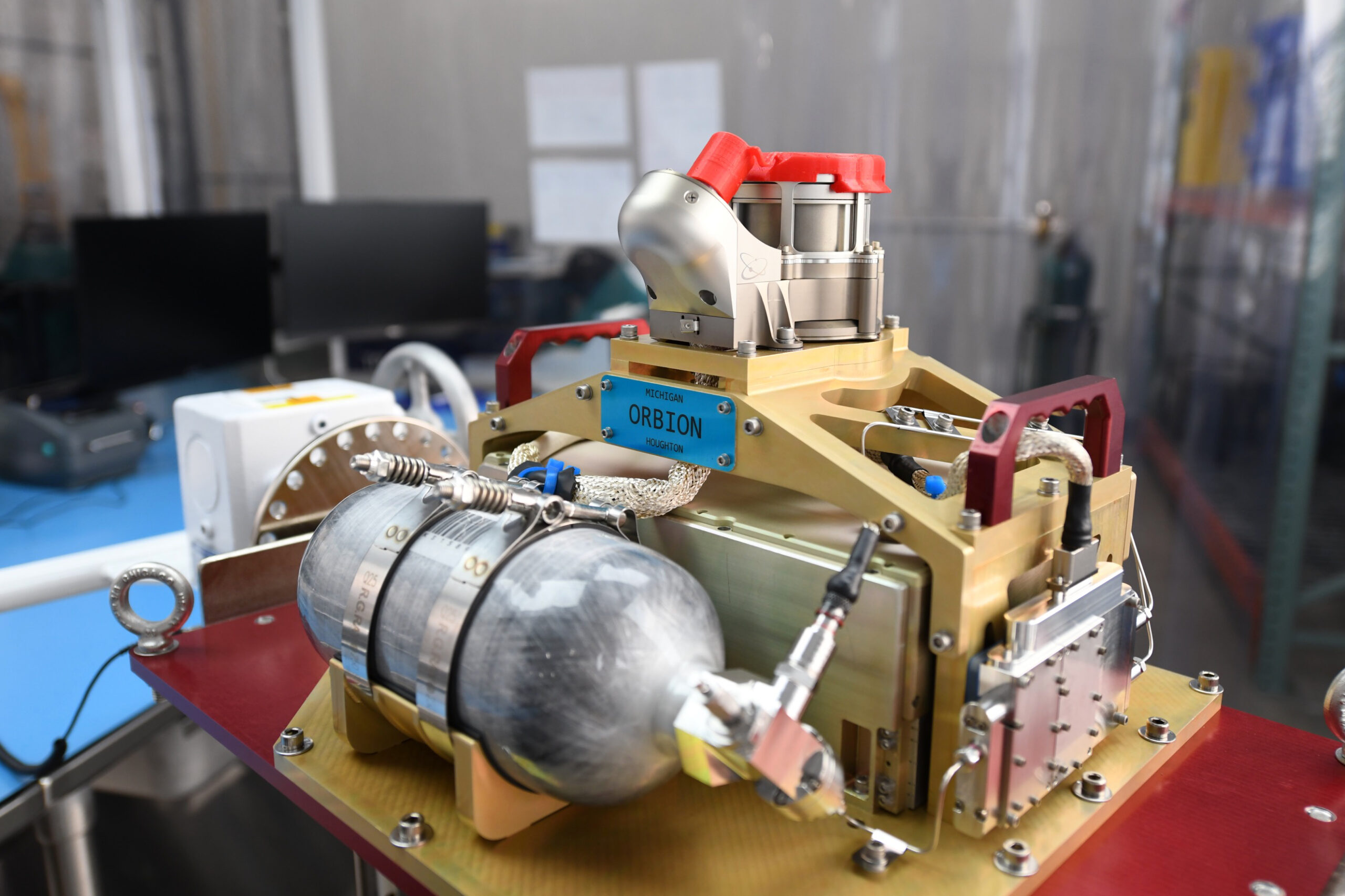
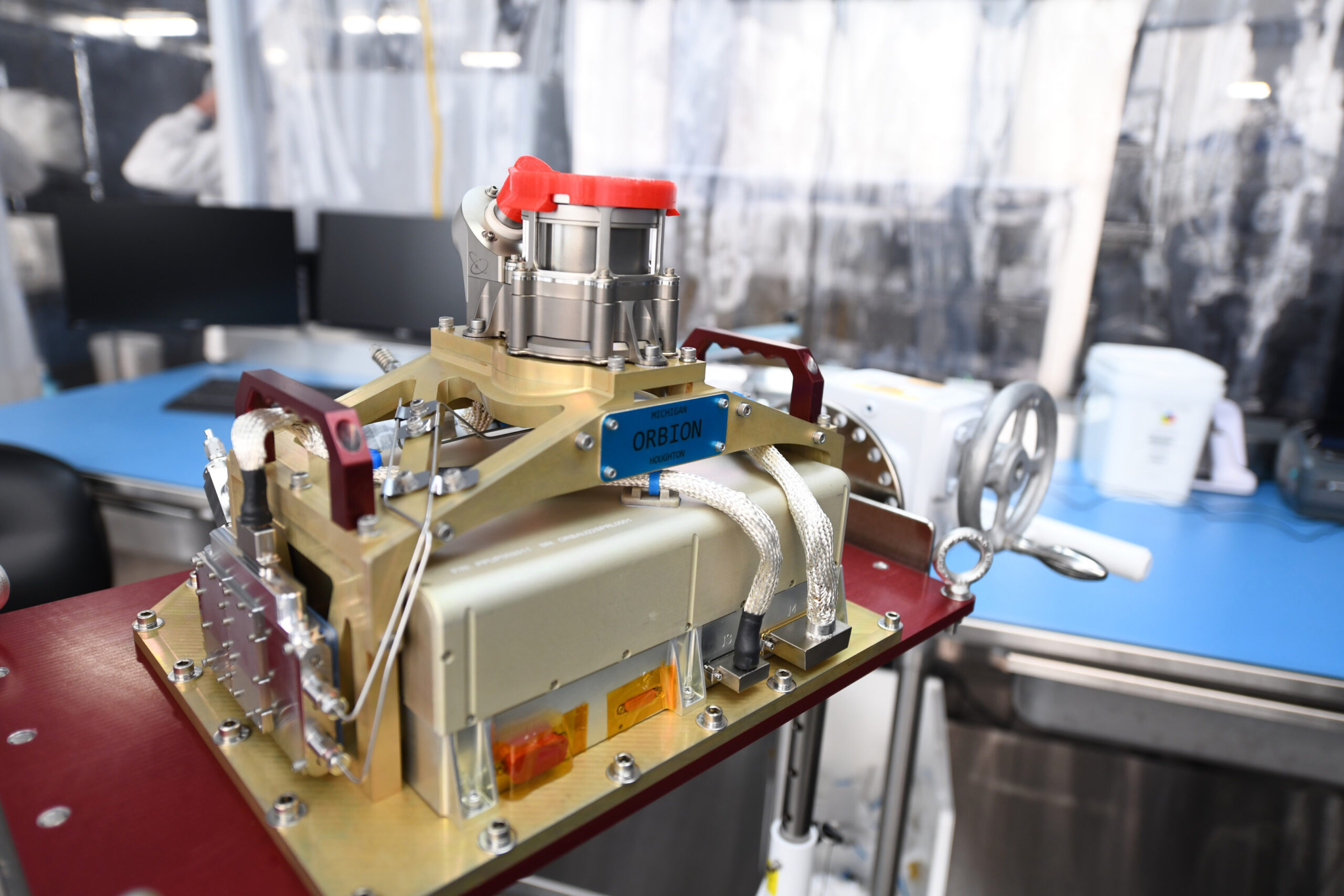
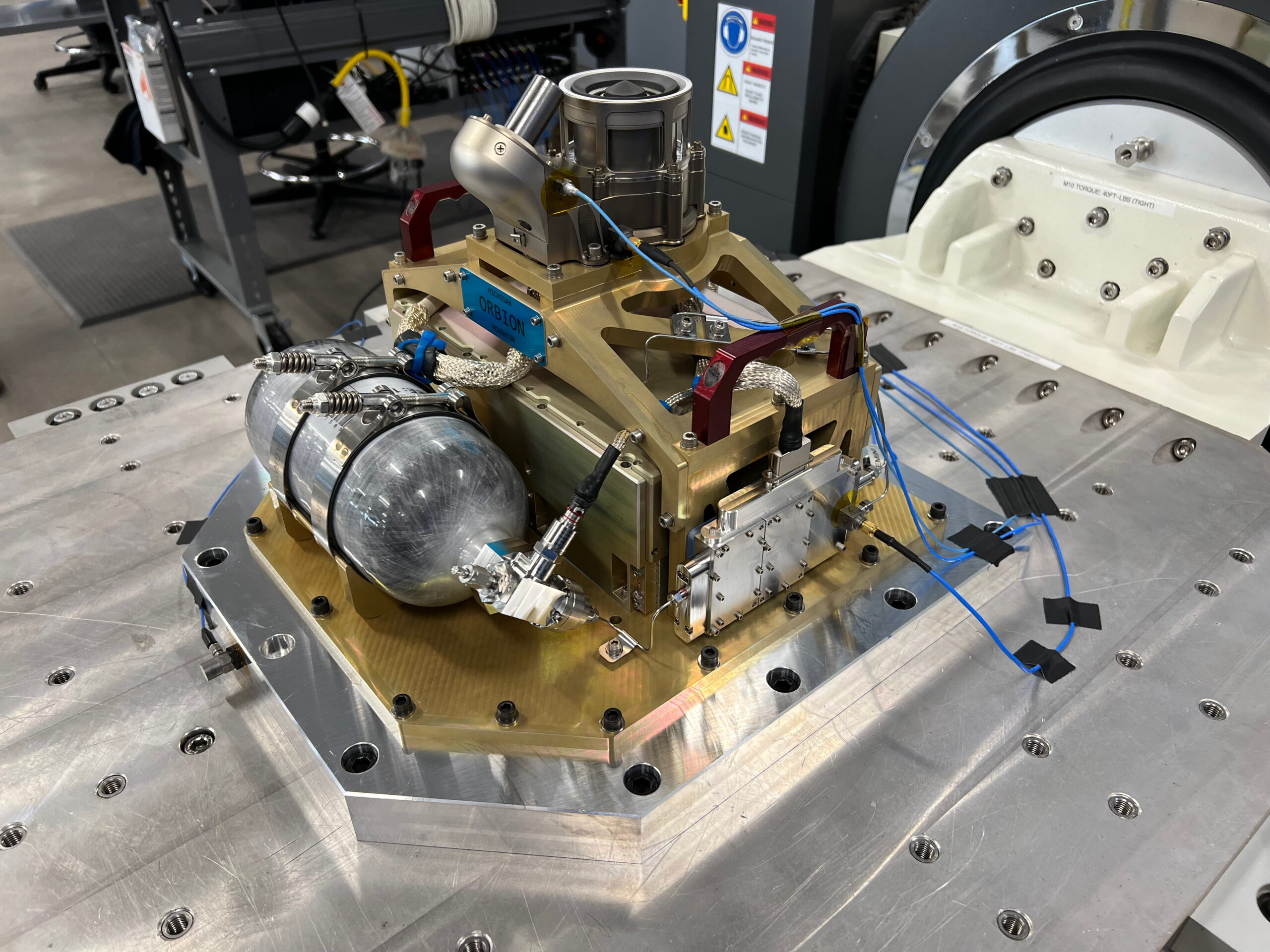
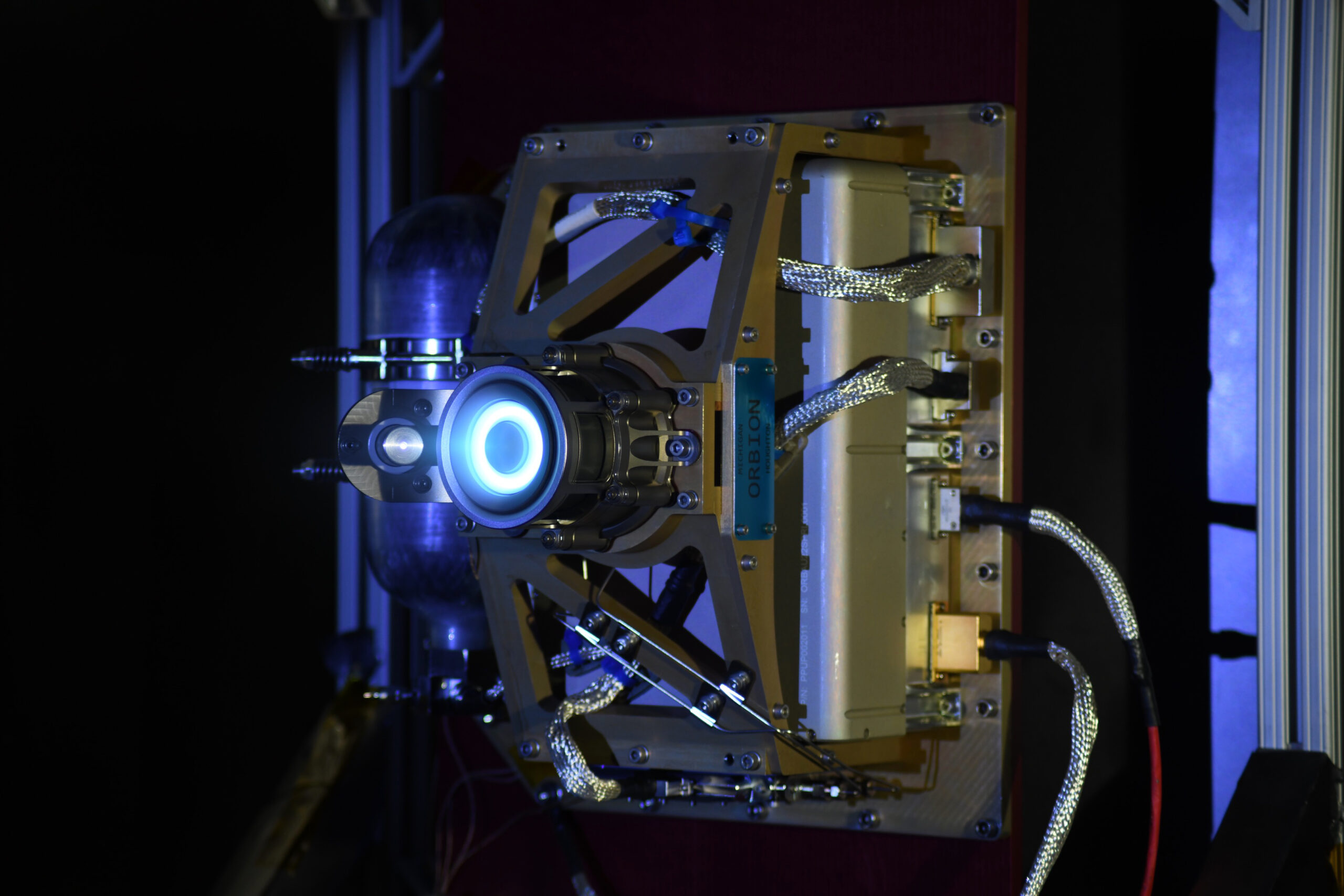
Benefits of Aurora
When compared to other products and technology currently available, the Aurora Hall-effect Propulsion System is the clear choice.
The Aurora system is manufactured using modern automation, with robots and automated test facilities replacing small teams of lab technicians in white coats. Our manufacturing process can produce one to two units per run, or 1,000 units per run—all of them enjoying the same low price and high reliability.
Based on proven technology
High-capacity manufacturing
Reduced launch payloads
Low-cost
System reliability
Propellant Comparison
If xenon didn’t exist in nature then DARPA would fund someone to develop it – because it is that good for propulsion. When stored under moderate pressure Xe is a supercritical fluid – meaning it has the high density associated with a liquid, yet it fills the container with no free surface and no sloshing. Krypton and argon have been used in place of Xe for some missions with the goal of reducing cost. The replacement is not without trade-offs and the propellant cost savings can be erased by system performance impacts that have associated costs of their own. Kr and Ar store at very low density, thus much larger storage volumes are required for the same propellant mass. The tanks must be at higher pressure and so require thicker walls which, when taken together with the larger size of the tank, translates to increased dry mass. Kr and Ar have lower propulsive performance than Xe and they cause faster erosion of thruster components which reduces the lifetime and achievable total impulse available to maneuver the spacecraft. Orbion offers the Aurora system for operation on either Xe or Kr. The slider and graphic show volumetric trades (at 20 deg. C) to store 15 kg of propellant. Note that flight systems typically require tanks capable of 1.5X maximum expected operating pressure and that storage pressure increases with tank temperature.
97.25 liters
Volume
1300 psia
Pressure
Argon
39.37 liters
Volume
1300 psia
Pressure
Krypton
8.29 liters
Volume
1300 psia
Pressure
Xenon
Propellant Comparison
If xenon didn’t exist in nature then DARPA would fund someone to develop it – because it is that good for propulsion. When stored under moderate pressure Xe is a supercritical fluid – meaning it has the high density associated with a liquid, yet it fills the container with no free surface and no sloshing. Krypton and argon have been used in place of Xe for some missions with the goal of reducing cost. The replacement is not without trade-offs and the propellant cost savings can be erased by system performance impacts that have associated costs of their own. Kr and Ar store at very low density, thus much larger storage volumes are required for the same propellant mass. The tanks must be at higher pressure and so require thicker walls which, when taken together with the larger size of the tank, translates to increased dry mass. Kr and Ar have lower propulsive performance than Xe and they cause faster erosion of thruster components which reduces the lifetime and achievable total impulse available to maneuver the spacecraft. Orbion offers the Aurora system for operation on either Xe or Kr. The slider and graphic show volumetric trades (at 20 deg. C) to store 15 kg of propellant. Note that flight systems typically require tanks capable of 1.5X maximum expected operating pressure and that storage pressure increases with tank temperature.
Space Mission System Trades for Xe, Kr, and Ar
Spacecraft mass, volume, and cost implications are shown for a canonical 200 kN-s total impulse mission.
|
|
Data included are from the NIST Chemistry WebBook, gas supplier quotes, tank supplier quotes, and publicly available literature/data | Argon | Krypton | Xenon |
|---|---|---|---|---|
| Atomic Mass (amu) | 39.9 | 83.8 | 131.3 | |
| Ionization Energy (eV) | 15.8 | 14.0 | 12.1 | |
| Cost ($/kg) | $3 | $350 | $3,500 | |
| Storage Density at 20ºC & 1300 psia (kg/m3) | 154 | 381 | 1808 | |
| Storage Density at 20ºC & 2600 psia (kg/m3) | 312 | 869 | 2114 | |
| Storage Density at 20ºC & 14000 psia (kg/m3)* | 966* | 1951* | 2737* | |
| Propellant Mass for 200 kN-s Mission (kg) | 12.0 | 17.0 | 15.7 | |
| 1300 psia | Tank Volume needed for 200 kN-s Mission at 1300 psia (L) | 77.9 | 44.6 | 8.7 |
| COPV Dry Tank Mass for 200 kN-s Mission at 1300 psia (kg) | 36.8 | 18.4 | 5.7 | |
| 2600 psia | Tank Volume needed for 200 kN-s Mission at 2600 psia (L) | 38.4 | 19.6 | 7.4 |
| COPV Dry Tank Mass for 200 kN-s Mission at 2600 psia (kg) | 18.4 | 12.3 | 5.7 | |
| 14000 psia | Tank Volume needed for 200 kN-s Mission at 14000 psia (L) | 12.4 | 8.7 | 5.7 |
| COPV Dry Tank Mass for 200 kN-s Mission at 14000 psia (kg) | Unrealistically high pressure – requires custom solution | |||
| Thrust per kW of Input Power (mN/kW) | 40 | 40 | 65 | |
| Specific Impulse for Sub-kW System (s) | 1700 | 1200 | 1300 | |
* Storage at 14,000 psia is not practical and included for comparison purposes.
Aurora System Specifications
Download a data sheet describing Aurora system performance and interfaces.
DownloadConfigure a system for your mission
Our real-time Configurator tool can calculate the total propulsion system wet mass, tank dimensions, maneuver time, and other metrics based on your mission requirements. After selecting your specifications you can instantly download presentation-ready slides with detailed dimensions and a 3D pdf solid model showing the Aurora configuration that meets your needs.
Configure your propulsion systemTECHNOLOGY
Hall-effect thrusters are the most trusted electric propulsion technology in the industry. See how they compare with other options.
Learn about our technologyMANUFACTURING
Orbion’s propulsion systems are manufactured using an optimal mix of touch labor and robotic assembly to increase reliability and decrease cost.
Learn about our manufacturingGet In Touch
Partner with us as we redefine what’s possible using small satellite technology.
Contact Us
